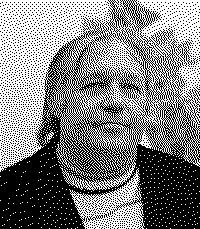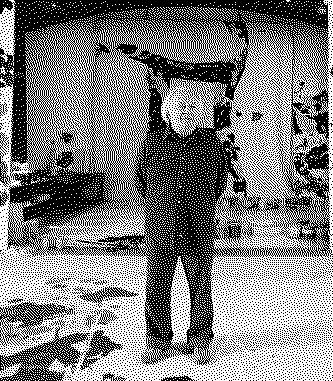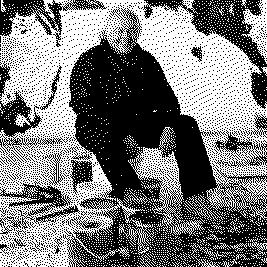Artists/Sam Francis
Fast Facts
Abstract Expressionist Innovations
Francis became a prominent figure in the Abstract Expressionist movement of the 1950s. He developed a distinctive style characterized by his use of vibrant colors, fluid forms, and the incorporation of negative space in his compositions.
International Recognition
He gained international acclaim and exhibited widely in the United States, Europe, and Asia. His work was featured in numerous solo and group exhibitions, solidifying his reputation as a leading abstract painter.
Experimentation with Materials
Francis was known for his experimental approach to materials and techniques. He often used unconventional tools such as spray guns and squeegees to apply paint, creating textured surfaces and dynamic patterns.
Influence of Asian Art
His travels to Japan and exposure to Japanese calligraphy and Zen philosophy deeply influenced his work. This influence is evident in his use of empty spaces within his compositions and the fluidity of his brushwork.
Biography



Sam Francis (1923-1994) was a towering figure in post-war American art, celebrated for his contributions to Abstract Expressionism and recognized for his distinct interpretation of color and light.
His journey as an artist was marked by a rich tapestry of experiences and influences that shaped his expansive body of work, which includes thousands of paintings, works on paper, prints, and monotypes now housed in major museums and institutions worldwide.
Born in San Mateo, California, Francis's early years were touched by tragedy and transformation. Following a debilitating plane crash while serving in the U.S. Army Air Corps during World War II, Francis turned to painting during his lengthy hospitalization as a form of distraction and self-expression. This period of convalescence marked the beginning of his lifelong engagement with the creative process, ultimately leading him to abandon his initial pursuit of medicine for art (Encyclopedia Britannica).
Francis's artistic education was formalized at the University of California, Berkeley, where he studied under David Park and was influenced by the Abstract Expressionism movement, particularly the works of Clyfford Still and Jackson Pollock. His unique style, characterized by the use of space to allow for the free circulation of strong color and a sensitivity to light, began to emerge during his studies (Sam Francis).
In 1950, Francis moved to Paris, a relocation that heralded a transformative period in his career. During this time, he immersed himself in the study of Monet’s Water Lilies and engaged with the Matisse family, Al Held, Joan Mitchell, and Jean-Paul Riopelle, among others. This phase was crucial in developing his signature style, marked by lyrical and gestural expressions of color and light. Francis's work during this period earned him international acclaim, including recognition by Time Magazine as "the hottest American painter in Paris" (Sam Francis Foundation).
Francis was a prolific traveler, maintaining studios across the globe in Bern, Paris, Tokyo, Mexico City, New York, and California. His exposure to diverse cultures, styles, and techniques informed his evolving dialogue and style of painting. Throughout his career, Francis explored the intersections of art, technology, psychology, science, medicine, and environmental protection, reflecting a deep commitment to the creative process across various domains (Sam Francis Foundation).
His personal life was as rich and varied as his professional one; Francis was married five times and fathered four children. His work and exhibitions secured international recognition for postwar American painting, particularly in Europe and Japan. Francis's legacy continues through the Sam Francis Foundation, dedicated to preserving and promoting his creative legacy (Wikipedia).
Importance
Sam Francis's significance in the realm of modern art and his broader impact can be highlighted through several key contributions and influences that have cemented his legacy as a pivotal figure in post-war American painting:
Pioneering Abstract Expressionism and Color Field Painting
Francis was instrumental in the evolution of Abstract Expressionism and Color Field painting, movements that redefined the boundaries of abstract art in the 20th century. His work is characterized by a deep exploration of color, light, and space, which allowed for a new understanding and experience of painting. Through his expressive use of color and innovative techniques, Francis expanded the possibilities of non-figurative painting and contributed to the global discourse on abstraction (Sam Francis Foundation) (Encyclopedia Britannica).
International Influence and Collaboration
Francis's work and presence in Paris and other global art capitals during the mid-20th century helped bridge American art with European and Asian art movements. His international outlook and collaborations with artists around the world contributed to a more interconnected global art scene and helped secure international recognition for post-war American painting. His influence is particularly noted in Europe and Japan, where his work is extensively collected and exhibited (Wikipedia) (Encyclopedia Britannica).
Interdisciplinary Approach and Exploration
Reflecting a profound interest in the intersection of art with other fields, Francis's work is noted for its interdisciplinary approach. He explored the creative process through the lenses of literature, music, science, psychology, and environmental activism, underscoring the multifaceted nature of creativity. This holistic approach to art-making has inspired generations of artists to consider the broader implications of their work beyond the canvas (Sam Francis Foundation).
Contribution to Artistic and Cultural Dialogues
Through his vibrant canvases and experimental works on paper, Francis contributed significantly to artistic and cultural dialogues about the nature of color, light, and the emotional and psychological effects of art. His legacy includes a deep engagement with the spiritual and transcendental possibilities of art, encouraging viewers to experience and contemplate the immaterial and the ineffable through the materiality of paint (Sam Francis Foundation) (Encyclopedia Britannica).
Legacy and Philanthropy
Beyond his contributions to art, Francis's legacy is also preserved through his philanthropic efforts and the establishment of the Sam Francis Foundation. The foundation aims to promote awareness of Francis’s work, support art education, and foster creativity across disciplines. This ensures that his innovative spirit and commitment to the transformative power of art continue to influence and inspire (Wikipedia).
Record-Breaking Auction Sales
Francis's work has achieved significant recognition in the art market, with several of his pieces breaking auction records. This commercial success underscores the enduring appeal and importance of his work within the contemporary art world and amongst collectors (Wikipedia).
Technique
Sam Francis's innovative painting techniques and philosophical approach to art established him as a significant figure in post-war American painting, impacting both the abstract expressionism and color field movements. His method evolved over the decades, reflecting his deep engagement with color, form, and the creative process.
Evolving Use of Color and Form
Francis is known for his dynamic use of color and form, experimenting with different mediums including oil paint, acrylics, and lithography. His work in the 1980s, for instance, showcased a transition from geometric patterns to more fluid and overlapping daubs of acrylic paint, demonstrating his mastery in manipulating color and texture to convey emotion and energy (Artsy).
Layering and Textural Depth
Francis's paintings often exhibit a profound sense of layering, achieving textural depth through the application of thin washes of color. This technique created a luminosity and depth in his works, allowing for the interplay of light and color to emerge as central themes. His paintings are characterized by their spontaneity and the emotional intensity of his color choices (Sam Francis Foundation).
Influences and Inspirations
Throughout his career, Francis drew inspiration from a wide range of sources, including New York abstract expressionism, color field painting, and Asian art. His work is noted for its references to Chinese and Japanese art, French impressionism, and his own Bay Area roots, reflecting a global perspective on art and creativity (Sam Francis Foundation).
Creative Process and Exploration
Francis was deeply interested in the nature of creativity itself, exploring various mediums and techniques to express his philosophical inquiries into color, space, and light. His work reflects a continuous exploration of the boundaries of painting, where the canvas became a space for experimentation and discovery (Sam Francis Foundation).
Legacy and Influence
The Sam Francis Foundation continues to promote his artistic legacy, emphasizing the transformative power of art and its role in society. Through its efforts in education, documentation, and exhibition programming, the foundation furthers the understanding of Francis's contributions to art and his explorations of creativity (Sam Francis).













